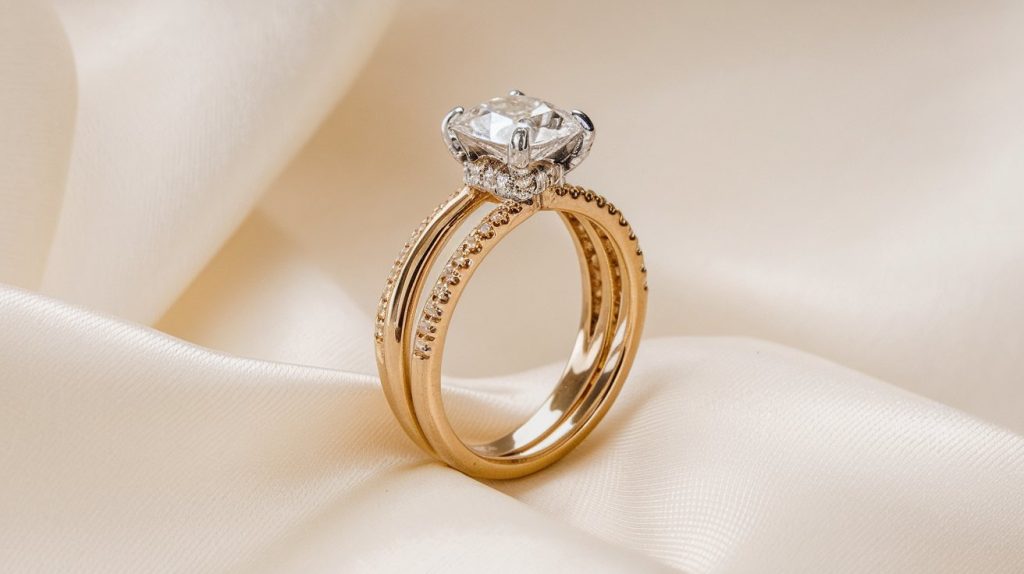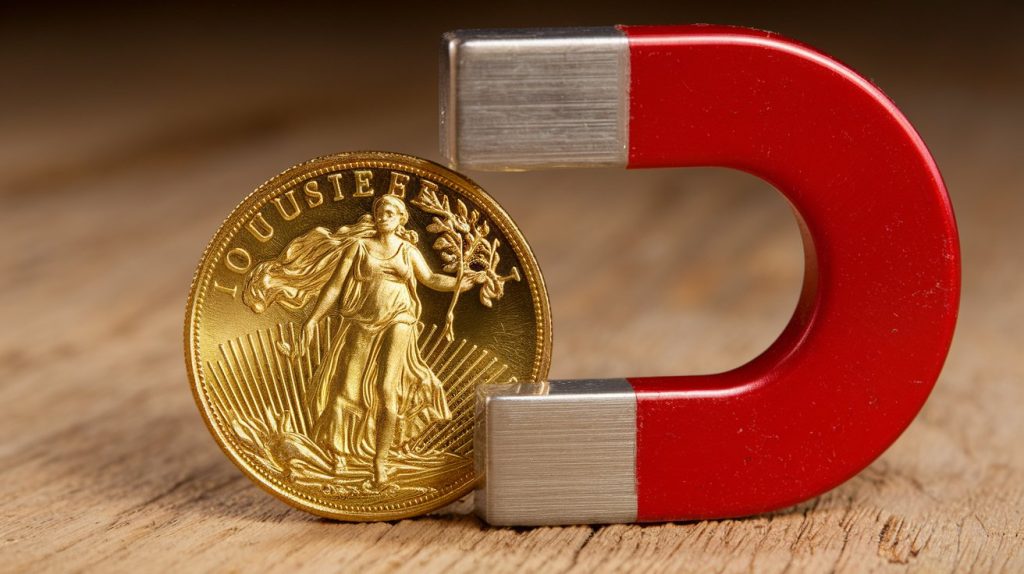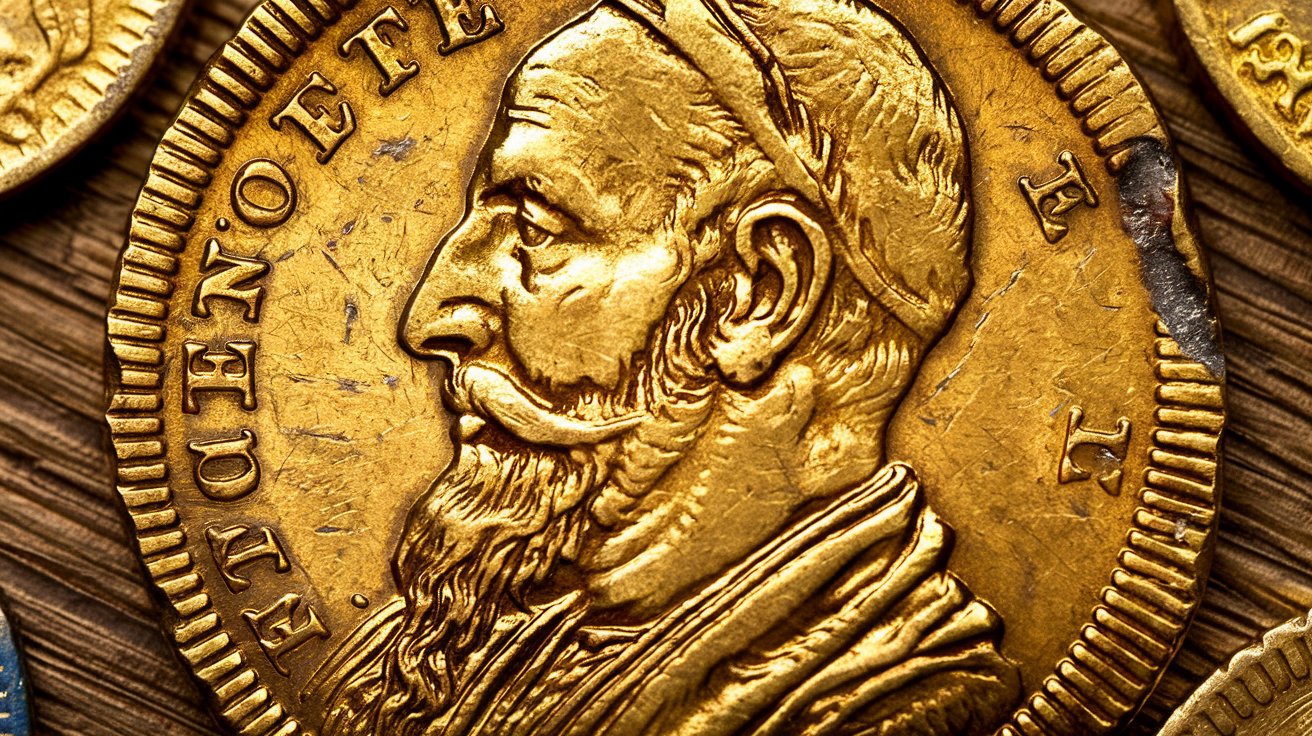Table of Contents
Gold has always fascinated people with its beauty and value. But how can you tell if gold is real? Whether investing in jewelry or discovering an old coin, knowing how to verify gold’s authenticity is crucial. This article explores reliable methods to test gold, from simple tricks you can try at home to more advanced testing techniques. Let’s dive in and uncover the secrets to identifying real gold!
Why It’s Important to Know If Gold Is Real

When it comes to gold, authenticity is everything. Owning real gold brings both financial security and personal satisfaction. However, fake gold is more common than you might think. Scammers and counterfeiters often sell items that look gold but are made from cheaper metals. Knowing if real gold can save you from wasting money and ensure your investment holds actual value.
Understanding Gold Purity and Karats
Before diving into the tests, understand what makes gold “real.” Gold purity is measured in karats, with 24 karats representing pure gold. Common types include 10k, 14k, 18k, and 22k, with higher numbers indicating more excellent gold content. However, not all gold jewelry is pure gold. Alloys are often mixed with gold to make it stronger and more durable. This section provides the foundation you need to recognize and test gold effectively.
Simple At-Home Tests for Identifying Real Gold
If you want to check if gold is real quickly, you can perform several easy tests at home. Let’s explore some of these methods.
The Magnet Test
One of the easiest ways to tell if gold is real is by using a magnet. Real gold is not magnetic, so if your item is attracted to a magnet, it’s likely not real gold. Hold a strong magnet near your gold piece. If it sticks, the item is probably fake or gold-plated. Remember, this test is not foolproof since some counterfeit gold items are made with non-magnetic metals.
The Water Test
The water test is another quick and simple method. Gold is dense, so real gold will sink when placed in water. Drop your gold item into a bowl of water. If it sinks straight to the bottom, it’s likely accurate. If it floats or hovers, it could be fake. Be cautious with this test if your item has delicate stones or is very lightweight.
The Scratch Test
While not ideal for delicate jewelry, the scratch test is commonly used to check if gold is real. Gently scratch the item against a piece of unglazed ceramic tile. Real gold will leave a gold streak, while fake gold or gold-plated items may leave a black streak. Use caution, as scratching could damage the item if it’s authentic.
How can you tell if gold is really an advanced testing Method for accurate results?
While at-home tests are helpful, they can sometimes be unreliable. Consider these advanced testing methods if you need a more accurate way to tell if gold is real.
Acid Test for Gold
The acid test is one of the most accurate ways to determine gold purity. How can you tell if gold is real? Jewelers commonly use this method. A small drop of acid is placed on the gold item, and the reaction determines if it’s real. Different acids are used for different karat levels. The gold is genuine if the acid causes no response; if it dissolves or changes color, it’s likely fake. This test is best left to professionals, as it can permanently damage the item if done incorrectly.
Electronic Gold Tester
Electronic gold testers are another precise option. These devices measure the conductivity of gold and can accurately determine its karat level. They are easy to use and provide quick results, but high-quality testers can be expensive. This method is perfect if you regularly need to check if gold is honest and want consistent accuracy.
X-Ray Fluorescence (XRF) Analysis
Experts use XRF analysis for the most thorough examination. This test involves directing X-rays at the item, emitting energy unique to the metals present. It provides a detailed report on the composition of gold, which is commonly used in laboratories. While it’s not practical for casual testing, it’s the gold standard when you need to know the exact purity of an item.
Common Myths About Testing Gold

While many methods work well, some popular tests are more myth than reality. Let’s debunk a few common misconceptions.
The Bite Test
Movies and cartoons often show people biting gold to test its authenticity. The idea is that pure gold is soft enough to leave a mark when bitten. While this is somewhat true, it’s not a reliable or recommended test. You could damage your teeth or scratch the gold item, and many counterfeit items are designed to mimic this softness.
The Vinegar Test
Another widely circulated myth is that vinegar can be used to test gold. How can you tell if gold is real? The idea is to soak the item in vinegar and watch for color changes. Real gold should remain unchanged. While this may work in some cases, it’s unreliable for determining gold purity and can damage gold-plated items.
How to Care for Your Gold Items
Once you’ve verified that your gold is real, proper care is essential to maintaining its shine and value. Here are a few tips:
- Clean Gently: Use mild soap and warm water to clean gold items. Avoid harsh chemicals, which can damage delicate pieces.
- Store Properly: Store gold jewelry in soft cloth pouches to prevent scratches. Keep pieces separate to avoid tangling.
- Regular Inspections: If your gold has stones or intricate designs, check for loose parts and consider getting regular inspections from a jeweler.
Also read: Can you open carry in California? Find out exciting details!
Knowing whether gold is real can save you from costly mistakes. From simple at-home tests to more advanced methods, there are plenty of ways to verify gold’s authenticity. How can you tell if gold is real? Whether you’re testing a family heirloom or a new purchase, understanding these techniques helps you confidently determine if your gold is genuine.




